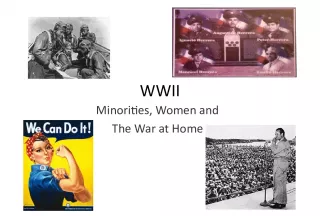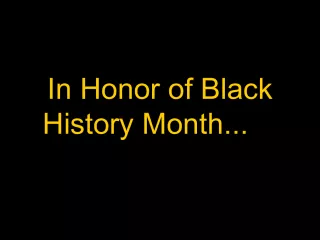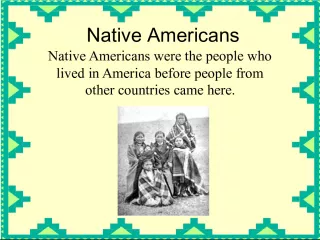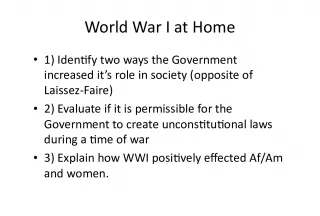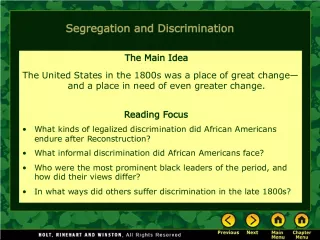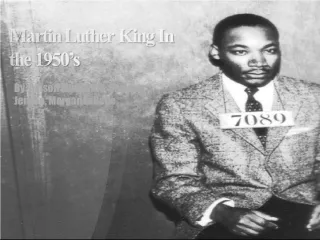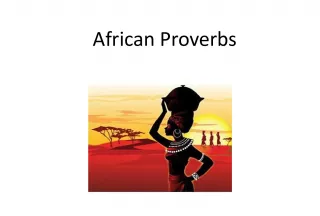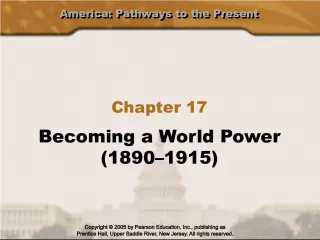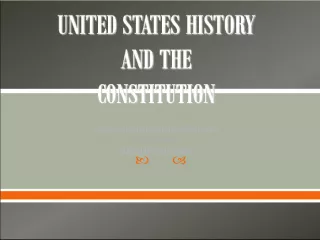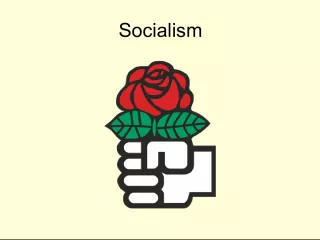The Struggles of African Americans in America at Mid Century


This article explores the racism and prejudice faced by African Americans in America during the mid-20th century. Discrimination and unequal treatment based on a person's race,
- Uploaded on | 1 Views
-
 nicholaslee
nicholaslee
About The Struggles of African Americans in America at Mid Century
PowerPoint presentation about 'The Struggles of African Americans in America at Mid Century'. This presentation describes the topic on This article explores the racism and prejudice faced by African Americans in America during the mid-20th century. Discrimination and unequal treatment based on a person's race,. The key topics included in this slideshow are . Download this presentation absolutely free.
Presentation Transcript
Slide1African Americans atMid-Century
Slide4 racism: prejudice based on race discrimination: unequal treatment based on a person’s race, gender, religion, place of birth, or other arbitrary characteristic segregation: the social separation of groups of people, especially by race
Slide619A: Working Conditions of Slaves• Slaves work from sunup to sundown. • Some slaves worked in the fields. • Some slaves worked in the house. • Some slaves were skilled craftspeople. • Slaves began to work at age six.
Slide819B: Living Conditions of Slaves• Slaves lived crowded together in crude cabins. • Few slaves went hungry. They ate cornmeal, bacon, molasses, & food from gardens & hunting. • Slaves wore course linen called “negro cloth.” • Medical treatment was provided, but was not very good.
Slide1019C: Controlling Slaves• Beating • Whipping • Branding • Keeping slaves as ignorant & dependent as possible • Instilling fear
Slide1219D: Resistance to Slavery• Slaves broke tools. • Slaves worked sloppily. • Slaves took food from their owners’ kitchens. • Slaves acted dumb or sick. • Slaves refused orders, ran away, or openly revolted.
Slide1419E: Slave Families & Communities• Positive Aspects: – Most slaves grew up in families with both a father & a mother. – Tight-knit slave families & communities helped slaves cope with slavery. • Negative Aspects: – Laws did not protect slave families. – Owners could break up families through the sale of one slave.
Slide1619F: Leisure Time Activities• Quilting bees • Corn-husking parties • Singing & dancing • Telling tales • Going to church • Playing games
Slide1819G: Slave Churches• The word invisible refers to the fact that slaves had to hide their religious beliefs. • Slave masters tried to use religion to control their slaves. • Slaves worked hard to establish their own, invisible church that expressed their own experience.
Slide2019H: African American Culture• Slaves used African images, such as animals, in their quilts. • Slave spirituals used African rhythms & harmonies. • Slaves dances were based on African traditions. • Slaves told stories that incorporated African legends & folktales.
